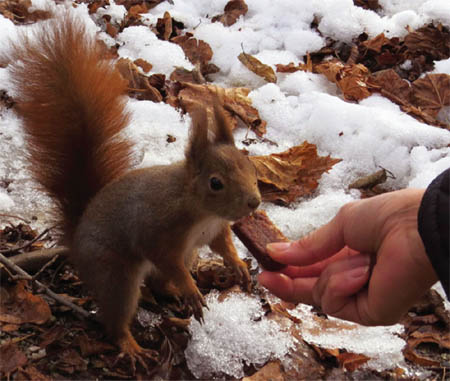| February
/ 2018 - Michael Ryan
|
|
We
took a short break in Vienna on the first weekend of December where
our hotel was literally on the other side of the road from one of
the entrances to Schonbruun Park, home to the spectacular winter palace
of the Hapsburg Dynasty with extensive grounds and spectacular fountains
and monuments. We were on a package guided holiday and when we arrived
at the hotel on Sunday morning our guide had advised us that for the
rest of the day, which we had free, we go to see some of the sights
in the city rather than go to the park since, as part of our tour,
we would be taken to the Palace and |
|
|
We
had sightings of Great Spotted Woodpecker but then another woodpecker
caught our attention. Unlike the Great Spotted this woodpecker had
a solid red crown on the top of its head. Before we came I’d
read a piece online from somebody who’d put up a photo of a
bird in Schonbruun which he’d thought might have been the much
more uncommon Middle Spotted Woodpecker until somebody deflated his
observation by saying it was probably a juvenile male Great Spotted
which have the full red patch on their head for the first few months
of life. But December would have been very late in the year for one
to till have the juvenile plumage and I was hopefully confident. Subsequent
referencing confirmed it was indeed a Middle Spotted Woodpecker.
|
||
DALKEY HOME PAGE | DALKEY COMMUNITY COUNCIL | DALKEY HERITAGE COMPANY | CANNONAID



